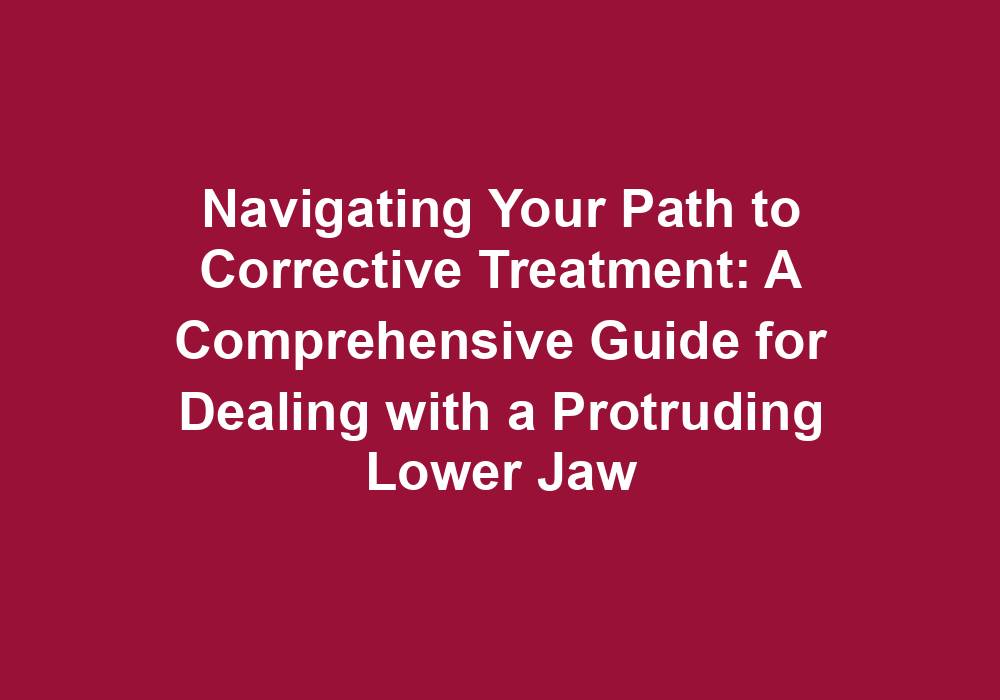Teleconsultation – 2023-07-14 19:14
I have a protruding lower jaw, what can I do? Im 21 years old.
Dear Anonymous,
I hope this message finds you well. I understand that you are seeking advice on how to address your protruding lower jaw. As a maxillofacial surgeon, I will gladly guide you through a potential treatment plan step by step.
Step 1: Consultation and Diagnosis
This is where we start. I invite you to schedule an in-person consultation where I can assess your lower jaw and its relation to the rest of your face. This usually involves taking photographs, x-rays, and possibly a computed tomography (CT) scan. We will discuss your medical history, your concerns, and your expectations. Then, we can determine whether orthognathic surgery (which involves surgically repositioning the jaws) is an appropriate solution for you.
Step 2: Orthodontic Preparation
In many cases, orthodontic treatment is required before orthognathic surgery to align the teeth in each jaw. This could take anywhere from a few months to a couple of years, depending on the specifics of your case. Your orthodontist will work closely with your surgeon to plan the treatment, ensuring that your teeth will fit together correctly after surgery.
Step 3: Orthognathic Surgery
Once your teeth are properly aligned, the surgery can take place. This typically involves making cuts in the bones of the upper, lower, or both jaws and moving them into the correct position. The method used will depend on the specific characteristics of your jaw and the extent of the misalignment.
Step 4: Postoperative Care
Following the surgery, you will typically spend one to two days in the hospital. You will be on a liquid diet initially and gradually progress to soft foods. You can expect some swelling, bruising, and discomfort, but this should lessen within a few days to weeks. Your surgeon will provide detailed postoperative instructions to ensure a smooth recovery.
Step 5: Continuing Orthodontic Treatment
Once you have healed from the surgery, you will likely need to continue with orthodontic treatment for several months to perfect your bite and finalize tooth positions.
Step 6: Retention
Once orthodontic treatment is completed, you will need to wear a retainer to ensure your teeth remain in their new positions. This is a critical step in maintaining the results of your surgical correction.
Please bear in mind that this is a general plan and the specifics of your treatment may vary. I encourage you to reach out to a maxillofacial surgeon in your area to discuss your case in detail.
I hope that this information has been helpful to you. Please feel free to reach out if you have any further questions or concerns. Remember, your health and satisfaction are the most important things.
Kind regards,
Glossary
Orthognathic Surgery: A surgical procedure that corrects conditions of the jaw and face related to structure, growth, sleep apnea, TMJ disorders, malocclusion problems owing to skeletal disharmonies, or other orthodontic problems that cannot be easily treated with braces.
Orthodontic Treatment: A method of straightening or moving teeth, to improve the appearance of the teeth and how they work. It can also help to look after the long-term health of your teeth, gums and jaw joints, by spreading the biting pressure over all your teeth.
Computed Tomography (CT) Scan: A type of imaging test. It uses X-ray and computer technology to make detailed pictures of the body.
Malocclusion: A misalignment or incorrect relation between the teeth of the two dental arches when they approach each other as the jaws close.
Maxillofacial: Relating to the jaws and face, primarily associated with diseases, injuries and conditions that affect the jaw and face.
Retention: The final phase of orthodontic treatment. The goal of this phase is to ensure the teeth do not shift back to their original positions. A retainer will be used to maintain the improved position of the teeth.
TMJ Disorders: A type of temporomandibular disorder or TMD can cause pain in your jaw joint and in the muscles that control jaw movement.
General Data Protection Regulation (GDPR)
Kindly take note that this is a research project conducted by Michael Truppe, MD and should not be considered as medical advice. All rights reserved © 2023 Michael Truppe, MD.
EURODOC Telemedizin ForschungsgesellschaftmbH
Albertgasse 3/6, 1080 Wien
Tel: +43 1 408 95 00 66
Email: cloud@smile.wien
Web: https://smile.wien


Leave a Reply